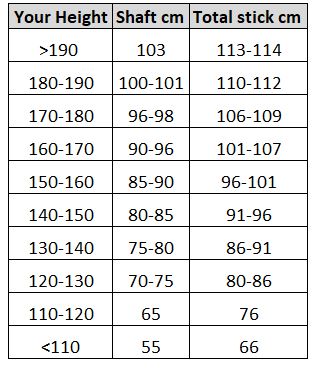Do you Ship to Singapore, Norway, Finland, Switzerland etc?
Yes, I ship to every country in the world.
Can you change blade on a stick I want to order and do I have to pay for it?
Yes, I will change blade for you and its for free.
Is it enough to just email in my order?
Yes, if you send me an email (floorballsports@gmail.com) and I will reply and confirm your order the same day and mostly within the hour.
How can I pay for my order?
Currently I accept Paypal, credit cards and bank transfers (which are for free within EU). After you complete your order you will receive a confirmation email with payment details. The bank details given will be enough for you to make a payment from anywhere in the world.
What is the shipping cost to my country?
When you do the order you can see the price in the order process. These are the guidelines for what you should be paying.
Stick package fitting up to 4 sticks and accessories: Netherlands 7 eur, Most of Europe 11 eur and countries such as Finland, Latvia and Estonia is 15 eur. Outside of Europe is 11 eur.
Package of 1 blade or similar small package: Netherlands 2.50 eur, Rest of the world 4 eur.
Package of 2 blades or similar small package: Netherlands 3.50 eur, Rest of the world 8 eur.
What is your company details?
Amsterdam Floorball Sports
Noordzijde 57
1064MB Amsterdam
The Netherlands
Dutch BTW / VAT Registration NR. NL231367727B01
Chamber of Comerce Registration NR. 50407058
Account name: Amsterdam Floorball sports
Bank: ABN AMRO Amsterdam, The Netherlands
IBAN: NL44ABNA0546935044
BIC: ABNANL2A
Choose Your First Stick

Floorballsports five things to consider when purchasing a stick
1. Stick Length
The most important factor to consider is the length of the stick. The correct length of stick should reach one to two centimeters above your navel. Stick lengths can vary, with most senior players (male and female) using sticks from 95-104 cm. For junior players, shorter sticks are available.
2. Shaft Stiffness or Flex
The shaft stiffness or flex is the second most important factor and is commonly listed in millimeters on the stick. The flex refers to how much the stick will flex under 30 lbs of pressure and is calculated by the International Floorball Federation’s testing institute. The lower the number, the stiffer the shaft of the stick is.
Competitive players prefer a stiffer stick shaft for harder and more accurate shots. According to current regulations, the stiffest stick allowed in IFF-sanctioned competitive play is 23. To determine the right flex for you, consider that the more you weigh and the harder your shot is the stiffer the shaft of your stick should be. Lighter players with a lighter shot should use a less stiff stick. While a stiffer flex is great for shots, a softer shaft is better for stickhandling.
3. Blade Type
There are numerous different types of floorball blades available varying in shape and stiffness. A stiffer blade will increase shot power while a soft one will help with ball control and “feeling”. Usually blades are designed with a “ball pocket” to help control the ball. Better blades will come pre-curved for either left or right shooting players. Commonly players will curve the blade to fit his or her style of play.
4. Grip Shape & Type
Round and Oval grip shapes are common in floorball. The best shape of grip is usually determined by a player’s personal preference. If you are unsure of the right shape of grip, choose a round grip as that is the most common. Higher-end sticks come with more advanced grips that repel moisture and provide better performance.
Curving the blade
To curve the blade, use a heat gun or other heat source (toaster, stove top) to heat the blade until it becomes slightly soft and malleable. Be careful not to place the blade too close to the heat source as you may melt the plastic. When the material soft enough to handle, shape the blade to your desired curve and while holding the shape, place it under cold water until the plastic is firm.
Some floorball players prefer to include a “hook” or a “claw” at the tip of the blade to help with air hooking and wrist shots. IFF competition rules state that the blade cannot be curved more than 3 cm. This is measured from the highest point of the bottom edge of the blade to the ground, with the blade laying flat on the ground.

